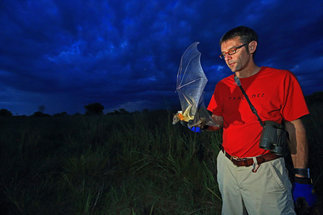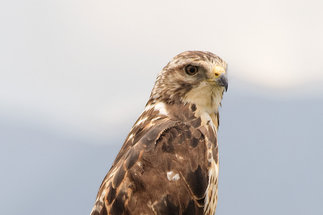In tune with the Earth

Harz Rollers were a type of life insurance for the miners in the Harz region: not the eponymous cheese, but the breed of canary introduced by the miners at the start of the 19th century. This little bird's job was to signal to the men when toxic gases were present in a mine. Canaries are extremely sensitive to so-called mine gases like carbon dioxide and carbon monoxide. Miners therefore always took a bird in a cage with them underground. If the bird fell off its perch, it was high time to get out of there.
Like the miners of earlier days, scientists now want to use the senses and skills of animals to warn us about changes and risks on our planet. After all, animal senses are often superior even to modern technology: many species have extremely sensitive ears, eyes and noses. Some are sensitive to tremors; others sense changes in the Earth's magnetic field. Most importantly, they are always there where they are needed – there is hardly a region in the world not inhabited by animals.
To this effect, an international team of scientists headed by Martin Wikelski from the Max Planck Institute of Animal Behavior in Constance developed a satellite-based monitoring system known as Icarus. The acronym stands for International Cooperation for Animal Research Using Space. Researchers on the Icarus project are interested in analysing the global movements and migrations of thousands of animals in real time and in this way collect data on the state of our planet.
This is only possible thanks to minute transmitters fitted to the animals which constantly transmit the animal's position and other data to a receiver on a mini satellit (CubeSat). From there, the data is sent to a ground station and published in the Movebank database, which is freely accessible.
Previously, behavioural researchers and ecologists could only observe animals for a comparatively short period of time. Likewise, ringed or marked animals told researchers very little about their migratory behaviour. This means that only about one percent of the lifespan of wild animals is known. We know even less about rare species or animals that live particularly covert lives. However, with the help of transmitters, scientists can observe animals without interruption for a longer period of time, in some cases over the course of their whole life – a technique known as telemetry. The telemetry data will show researchers where the animals are and how they are moving. It will also show who they are with, how they are doing and what their environment looks like.

Icarus will, however, do more than expand our knowledge of the lives of the animals themselves. The global movements and migrations of animals is expected to also help researchers to distinguish what is taking place on planet Earth. The movement profile of a wide variety of species is determined mainly by their environment. Their senses, which are often superior to human senses, allow them to respond to environmental changes as well as to natural catastrophes such as earthquakes or volcano eruptions before humans even notice them. The animals will thus be our sensors with which we will feel the pulse of the Earth.
Hopefully, with the aid of these animal sensors, natural catastrophes can be predicted, the spread of infectious diseases tracked, climate changes identified and threatened species be better protected. And last but not least, the scientists will learn a lot about the life and behaviour of animals.
Ecology and behavioural research are thus on the brink of a quantum leap, similar to that which occurred in genetics in the mid-1990s when the human genome project was launched to decode human genetic material. Icarus could do for our understanding of planet Earth what the human genome project with its decoding of human genetic material did for genetics.






